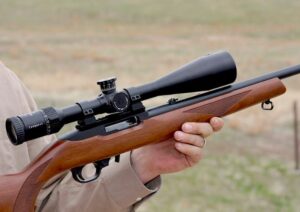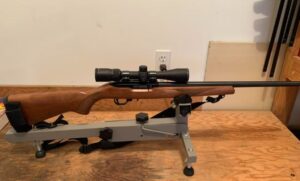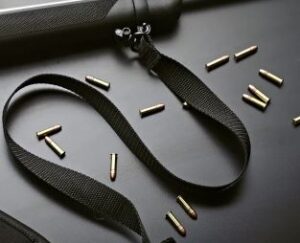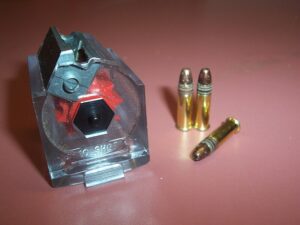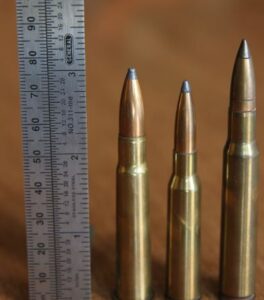
Mastering the art of precision shooting with your 1022 rifle requires a thoughtful approach to fine-tuning its various components. Whether you’re a seasoned competitor or a newcomer to the sport, understanding the nuances of this iconic .22 caliber rifle can make all the difference in achieving your desired level of accuracy and performance.
| Key 1022 Rifle Features | Description |
|---|---|
| Trigger Upgrade | Improving the trigger mechanism for a crisp, consistent break is essential for precision shooting. |
| Barrel Optimization | Selecting the right barrel profile and materials can enhance the 1022’s inherent accuracy potential. |
| Stock Customization | Modifying the stock can provide increased stability and comfort for long-range competition shooting. |
These are just a few of the key areas that can make a significant difference in your 1022’s performance. By carefully addressing each aspect, you’ll be well on your way to maximizing the potential of this versatile and beloved rifle.
What is a 1022 Rifle?
The Ruger 10/22 rifle, commonly referred to as the “1022,” has long been a staple in the world of rimfire shooting. Introduced in 1964, this semi-automatic .22 LR rifle has gained a loyal following among recreational shooters, hunters, and competitive marksmen alike. Its reliable design, accuracy, and customizability have made it a go-to choice for a wide range of applications, from plinking to small game hunting to precision competition shooting.
The 1022’s simple yet robust construction, combined with its user-friendly features, have contributed to its enduring popularity. Its lightweight, compact design makes it easy to handle, while its magazine-fed operation allows for rapid, controlled fire. Over the years, the 1022 has spawned a vast ecosystem of aftermarket accessories and upgrades, enabling shooters to fine-tune their rifles to meet their specific needs and preferences.
Upgrading the Trigger for Precision Shooting
One of the most impactful upgrades you can make to your 1022 for competition shooting is improving the trigger mechanism. The factory trigger on the 1022 is generally serviceable, but for precision work, a high-quality aftermarket trigger can make a significant difference in your ability to execute consistent, accurate shots.
Trigger Characteristics
When selecting a replacement trigger, look for features such as a crisp, clean break, a short reset, and a light pull weight. These characteristics will allow you to take up the slack quickly, apply smooth, controlled pressure, and release the shot with minimal disturbance to your sight picture. Many aftermarket trigger kits, such as those from Timney or Volquartsen, offer significant improvements over the stock trigger.
Trigger Installation
Installing an aftermarket trigger is a straightforward process, but it’s important to follow the manufacturer’s instructions carefully. Take your time, work slowly, and ensure that the trigger is properly aligned and functioning safely before taking the rifle to the range. Proper trigger installation is crucial for maintaining the 1022’s reliability and safety.
Selecting the Ideal Ammunition for Your 1022
Ammunition selection is a critical factor in maximizing the accuracy and precision of your 1022 rifle. The .22 LR cartridge offers a wide range of options, each with its own unique characteristics that can impact the rifle’s performance.
Match-Grade Ammunition
For competition shooting, it’s generally recommended to use high-quality, match-grade ammunition. These precision-engineered cartridges are designed to provide consistent velocity, minimal variance in bullet weight, and tight grouping at long ranges. Brands like CCI, Federal, and Eley are popular choices among competitive 1022 shooters.
Bullet Profiles
In addition to the ammunition brand, the bullet profile can also play a role in your 1022’s accuracy. Flat-nosed or round-nosed bullets tend to perform well in the 1022’s short barrel, while hollow-point or boat-tail designs may be better suited for longer-range shooting. Experiment with different bullet types to find the optimal match for your rifle and shooting conditions.
Optimizing the Barrel for Enhanced Accuracy
The barrel is another critical component that can significantly impact the accuracy and precision of your 1022 rifle. While the factory barrel is a solid starting point, there are several upgrades and modifications that can help you squeeze out every last bit of performance.
Barrel Length and Profile
One of the most common barrel upgrades for competition 1022s is a longer, heavier profile. Barrels in the 16-18 inch range are popular choices, as they provide a balance of velocity and stability. Additionally, selecting a barrel with a heavy, bull-barrel profile can help dampen vibrations and minimize harmonics for tighter groups.
Barrel Materials and Coatings
The material and surface finish of the barrel can also play a role in accuracy. Stainless steel barrels offer excellent durability and corrosion resistance, while lightweight carbon fiber or titanium barrels can reduce overall rifle weight. Some shooters also opt for barrels with specialized coatings, such as nitride or PVD, to enhance the finish and protect against wear.
Customizing the Stock for Improved Stability
The stock of your 1022 rifle is another area where you can make upgrades to enhance stability and comfort, both key factors for precision shooting.
Stock Materials and Designs
Aftermarket stocks made from materials like laminated wood, carbon fiber, or polymer can provide a significant improvement in rigidity and weight reduction compared to the factory stock. These stocks often feature adjustable features, such as length of pull, comb height, and cheek piece, allowing you to fine-tune the fit to your individual needs.
Sling Swivel Attachments
For long-range competition shooting, the addition of sling swivel attachments can be a valuable upgrade. These allow you to use a sling to help stabilize your rifle, providing an extra point of contact and support for steadier shots.
Sighting Systems: Choosing the Right Optics
Selecting the appropriate sighting system for your 1022 rifle is crucial for achieving the level of precision required in competitive shooting. While the 1022 can be equipped with iron sights, many shooters opt for the added precision and versatility of optics.
Magnified Scopes
High-quality, variable-power rifle scopes are a popular choice for 1022 competition shooting. These scopes offer the ability to zoom in on distant targets, providing a clear, detailed view for long-range shots. Look for features like exposed turrets, parallax adjustment, and reticle options that cater to your specific needs.
Red Dot Sights
For faster-paced shooting scenarios, red dot sights can be an excellent choice. These compact, reflex-style optics allow for quick target acquisition and both-eyes-open shooting, which can be advantageous in some competition formats.
Mastering Breathing Techniques for Steady Shots
Proper breathing technique is a fundamental skill for any precision shooter, and it’s especially important when competing with a 1022 rifle. Controlling your breathing can help you achieve a steady, consistent sight picture, which is essential for making accurate shots.
Respiratory Cycle
One of the most common breathing techniques for precision shooting is the “respiratory pause.” This involves taking a full breath, exhaling slowly, and then taking the shot during the natural pause between breaths. By timing your shot release with this natural respiratory pause, you can minimize movement and steadily hold your rifle in place.
Controlled Breathing Drills
Practicing controlled breathing drills, both on and off the range, can help ingrain this technique into muscle memory. Start by focusing on your breathing patterns, then gradually incorporate dry-fire practice and live-fire exercises to solidify the skill.
The Importance of Proper Shooting Posture
Maintaining a stable, consistent shooting posture is critical for achieving accurate and repeatable shots with your 1022 rifle. Your body position and stance can have a significant impact on your ability to control the rifle and execute precise shots.

Prone Position
The prone position is often considered the most stable and accurate shooting stance for 1022 competition. This position involves lying flat on the ground, with the rifle supported by a sling or bipod. Proper body alignment, elbow placement, and weight distribution are key to maintaining a steady hold.
Seated and Kneeling Positions
While the prone position is the gold standard, other supported positions, such as seated or kneeling, can also be effective for 1022 competition shooting. These stances can provide a balance of stability and mobility, depending on the specific requirements of the match.
Developing a Consistent Trigger Press
Mastering the art of the trigger press is essential for achieving accuracy and precision with your 1022 rifle. A consistent, controlled trigger press is crucial for minimizing movement and disruption to your sight picture during the shot.
Trigger Press Technique
The key to a consistent trigger press is to apply smooth, steady pressure until the shot breaks. Avoid jerking or slapping the trigger, as this can cause the rifle to move off target. Instead, focus on a slow, deliberate press that allows you to maintain a stable sight picture throughout the entire process.
Dry-Fire Practice
Incorporating dry-fire practice into your training regimen is an excellent way to develop and refine your trigger press technique. By practicing the trigger press without the distraction of live ammunition, you can hone your muscle memory and ensure a consistent, repeatable motion.
Environmental Factors Affecting 1022 Performance
When competing with your 1022 rifle, it’s important to be mindful of the various environmental factors that can impact the rifle’s performance and your ability to achieve accurate shots.
Wind Conditions
Wind is a significant factor that can affect the trajectory of your 1022’s .22 LR ammunition. Developing an understanding of wind reading and making appropriate adjustments to your aim and hold can help you compensate for these environmental influences.
Temperature and Humidity
Changes in temperature and humidity can also influence the behavior of your ammunition, affecting factors such as velocity and barrel harmonics. Monitoring these conditions and adjusting your shooting techniques accordingly can help you maintain consistent performance.
Competition Preparation: Drills and Practice Routines
Preparing for a 1022 competition shooting event requires a comprehensive training regimen that addresses both the technical and mental aspects of the sport.
Dry-Fire Drills
Dry-fire practice is an invaluable tool for honing your shooting skills without the need for live ammunition. Focusing on fundamentals like trigger press, sight picture, and breathing control can help you build muscle memory and develop a consistent, repeatable shooting process.
Live-Fire Practice
In addition to dry-fire drills, regular live-fire practice is essential for developing the practical skills required for competition shooting. Incorporate a variety of shooting positions, distances, and time constraints into your training to simulate the demands of a real match.
Maintenance and Care for Your 1022 Rifle
Proper maintenance and care of your 1022 rifle is crucial for ensuring reliable performance and maintaining its accuracy over time. Regular cleaning, lubrication, and inspections can help extend the life of your rifle and keep it in top condition for competition shooting.
Cleaning and Lubrication
Thoroughly cleaning your 1022’s action, barrel, and other critical components is essential after each use. Removing built-up carbon and residue, and applying a high-quality lubricant, can help prevent wear and ensure smooth, reliable operation.
Inspection and Replacement
Regularly inspecting your 1022 for any signs of wear or damage is also important. Pay close attention to the trigger mechanism, sights, and other critical components, and replace any worn or damaged parts as needed to maintain the rifle’s performance and safety.
Conclusion
Mastering the art of precision shooting with your 1022 rifle requires a multifaceted approach that addresses a range of technical and practical considerations. By carefully optimizing the trigger, barrel, stock, and sighting system, you can unlock the full potential of this iconic rimfire rifle and consistently deliver accurate, competition-grade shots.
Frequently Asked Questions
What are the key benefits of upgrading the trigger on a 1022 rifle?
Upgrading the trigger on a 1022 rifle can provide several key benefits for precision shooting, including a crisper, more consistent break, a shorter reset, and a lighter pull weight. These trigger enhancements allow for better control and execution of each shot, leading to improved accuracy and repeatability.
How can the barrel of a 1022 rifle be optimized for competition shooting?
Optimizing the barrel of a 1022 rifle for competition shooting can involve several modifications, such as selecting a longer, heavier profile barrel, as well as exploring different barrel materials and coatings. These changes can help dampen vibrations, minimize harmonics, and enhance the rifle’s inherent accuracy potential.
What are some important considerations when choosing optics for a 1022 rifle used in competition?
When selecting optics for a 1022 rifle used in competition, key considerations include the type of scope (magnified or red dot), the specific features and adjustments (such as exposed turrets and parallax adjustment), and the reticle design. These factors can greatly influence the shooter’s ability to acquire and engage targets at various distances.

